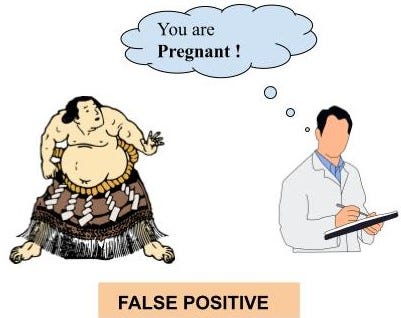An Introduction to Candlestick Charts Part 1: Simple Candlestick Patterns
What are candlestick charts? How can you use simple candlestick patterns to trade cryptocurrency? Find out in the first part of Interdax’s series on candlestick charts.

Overview
- Candlestick charts display key indicators of price action, namely the Open price, the High, the Low, and the Closing price (OHLC).
- Candlestick patterns are based on techniques developed in Japan and have only been implemented by Western traders in recent decades. Steve Nison is one of the most vocal proponents of candlestick charts.
- Candlesticks can form distinctive patterns that improve the probability of a trade being profitable, provided you interpret the pattern correctly in the context of the historical price action.
- Candlestick patterns have their own names. In this article, we look at some simple patterns, including the Hammer, the Shooting Star, Belt Hold Lines, Dojis and the Marubozu.
- Candlesticks are just one tool at the disposal of traders. In combination with other technical indicators (such as volume), candlestick analysis becomes even more powerful.
A Short History of Candlestick Charts
Candlestick charts can trace their history back to 18th century Japan, with experts on the topic (such as Steve Nison) crediting Munehisa Homma as one of the first individuals to use historical price action to predict the path of prices in the future.
In the 18th century, Japan had recently unified into a single country (prior to which 60 separate provinces frequently warred with each other). As a result, a centralised marketplace emerged, which influenced the development of technical analysis.

The Dojima Rice Exchange in Osaka offered the first ever futures contracts after 1710, as the exchange started to issue and accept rice coupons. Homma began trading at his local rice exchange in 1750 in the city of Sakata, but would end up eventually trading at the Dojima Rice Exchange.
To learn the psychology of investors, he studied the past price action and his trading principles as applied to rice markets would eventually evolve into what we know as candlestick charting today.
What are Candlestick Charts?
A candlestick is based on four prices of an asset over a particular time period; the opening price, the highest price point, the lowest price point, and the closing price (also known as OHLC). Candlestick charts can be used on any timeframe, from one minute to one month or one year. For simplicity, daily candlesticks are used as the reference point in this guide.
The range between the opening and closing price is the thicker part of the candlestick, known as the body. The thin lines that appear above and/or below candlesticks are known as shadows (or wicks) and display the lowest and highest price points for the day.
The wicks can help traders determine where to place take profit orders, as they show the maximum and minimum prices for a particular trading session. For instance, you could place a take profit order near the top of a wick if you are in a long position. The closing and opening prices can also serve as important support and resistance levels.
The body of a candlestick is green (or white) if the closing price is higher than the opening price. If the closing price is below the opening price, the body will be red (or black).
One of the main advantages of using candlestick charts in your trading is that they are very flexible. Candlestick charts can be combined with technical indicators or used with other chart types, such as bar charts. To get a valid trading signal, you must wait for the candlestick to close.
Observing the OHLC is useful as once a candlestick closes, the OHLC indicates who is in control at that moment.
For instance, suppose bitcoin opens at $10,000, does not go any lower than the open and reaches a high of $11,000. If the closing price is in the upper third of the candle’s trading range, above $10,666.66, then it is implied that buyers are in control. However, if the candle closes in the lower third, then buyers tried to push higher but lost control and a potential for reversal is much more likely. If the candle closes in the middle third then no one is really in control (more on that later).
While candlesticks provide high probability signals for entering or closing a trade, they do not provide any price targets. Also, candlestick analysis is often subjective as you must consider the previous price history and the location of a particular candlestick in relation to the entire chart to assess the signal effectively.
Using Candlestick Patterns to Trade
Certain candlestick patterns can give clues about the future direction of the price. There are simple candlestick patterns based on one candlestick, and more advanced patterns played out over two or three candlesticks.
The first two simple candlestick patterns we will look at are associated with a change in the preceding trend.
The Hammer and Hanging Man
The Hammer is a candlestick formation that has a long lower shadow and the body is at the top of the trading range. We can view a Hammer candlestick as bullish or bearish depending on where it appears in a trend. If we find a Hammer during a downtrend, then we take it as a signal that the downward trend may end.
Conversely, if this pattern is found during an uptrend, then it could indicate that buyers are running out of steam (and in this case is known as the Hanging Man). Both the Hammer and Hanging Man candlestick patterns can be red or green, and their interpretation remains the same.
Three characteristics define the Hammer and Hanging Man candlestick patterns:
i) The body is at the top of the trading range, (the colour does not matter),
ii) A long lower shadow should be at least twice the length of the body, and
iii) There should be no upper shadow, or it should only be very short.
The Hammer/Hanging Man pattern is more significant and commands more attention the longer the lower shadow is, the smaller the body is and the shorter the upper shadow is.
When using the Hanging Man pattern to trade, always wait for bearish confirmation. For instance, if the open of the next candle following a Hanging Man is lower than its body, then we can be sure that the Hanging Man represented a top in the market.
A top in the market could also be confirmed once a Hanging Man candlestick is followed by a bearish candlestick that has a close that is lower than the Hanging Man’s. Before acting on candlestick patterns, it is important to view the pattern in relation to the previous price action.
Hammer Example
An example is shown below for the Hammer candlestick pattern.
We should look for Hammers when the price has displayed a downward move. The chart below shows that on July 2, a Hammer candlestick was formed. The length of the lower wick is at least twice the size of the candle’s body, and the upper wick is very small. Also, notice that volume rose over the days prior to the Hammer pattern and on the day the candlestick formed.

Once the Hammer is observed, we could enter a long position once the daily trading session has closed. Alternatively, we could set limit orders to buy once the following day’s price action breaks above the closing price of the Hammer (at $10,829.12) or on a break above the high of the Hammer (at $10,917.87).
As shown above, the price went onto reach highs above $13,000 following the Hammer pattern. As we previously mentioned, wicks can help traders to exit their positions. The large upper wicks of the candlesticks for July 9 & 10 would have warned the trader that buyers were losing control, as they tried to push above $12,750 but were rejected on both instances.
Therefore, the two candlesticks on July 9 & 10 would have motivated a trader in a long position to exit the trade and take profits on the close of the candle on July 10, as large upper wicks shows that buyers tried to move the market higher but were beaten down by bears.
The Shooting Star and Inverted Hammer
Two other reversal signals given by candlestick patterns are the Shooting Star and the Inverted Hammer. As with the Hammer and Hanging Man, the Shooting Star and Inverted Hammer are the same candlestick pattern but differ only on where they are found in a trend.
First, a Shooting Star is a warning of an impending top in price and has a small body at the lower end of the range with a long upper shadow. The Shooting Star basically tells us that a rally could not last, where the market opened near the low, then rallied strongly before falling back near the opening price.
In an ideal case, the Shooting Star should possess a body that gaps away from the previous candlestick’s body.
Second, the Inverted Hammer is basically a Shooting Star, but is observed during a downward trend. While the Shooting Star is a bearish pattern, the Inverted Hammer is bullish.
However, it is important to gain bullish confirmation after an Inverted Hammer is observed and can confirm this if either; the next candlestick’s open is higher than the Inverted Hammer’s body or the Inverted Hammer is followed by a bullish candlestick with higher prices.
If the next session’s candlestick opens higher than the body of the Inverted Hammer, then those who went short near the open or close of the Inverted Hammer are losing money. The longer this persists, the more likely that these shorts will be covered and lead to a short-covered rally, where buyers might jump in as well — intensifying the upward move.
The Inverted Hammer candlestick is often a reliable indicator of a continuation of a downward trend. Therefore, you can use the Inverted Hammer’s low and open to determine whether to go long or short. If the price breaks below the low, then a continuation of the downtrend is likely. However, a break above the open will most likely lead to a reversal.
Shooting Star Example
A few examples of a Shooting Star candlestick are shown below. Remember, a Shooting Star is found at tops and the colour of the candle does not matter. As the chart below shows, the price declined following each Shooting Star pattern.

Inverted Hammer Example
On the other hand, an Inverted Hammer is usually found at bottoms, as shown below.
Once observed, we should look for bullish confirmation. as the chart below shows, the next trading session after the Inverted Hammer was bullish and moved above the open price of the Inverted Hammer, motivating a long position.

Belt Hold Lines
Another simple candlestick pattern that indicates a reversal is the belt hold, which can be bullish or bearish.
A bullish belt hold opens below the previous day’s close. From the lowest price (or has a tiny lower shadow) of the day, the price action progresses higher. The belt hold forecasts a rally, especially if it occurs at a relatively low price point. However, if the price moves back below the low of a bullish belt hold, this implies that bears are reinvigorated.
A bearish belt hold opens on the highest price (or has a very small upper shadow) of the day and heads downward. A bearish belt hold is more reliable when they occur at a relatively high price point. The signal is invalidated if the price moves back above the high of the bearish belt hold and indicates a resumption of buying pressure.

The longer the belt hold candlestick is, and the less frequently they have occurred in the past, the more significant the pattern is.
Bullish Belt Hold Example
The chart below shows an example of the Bullish Belt Hold.
The Bullish Belt Hold shown below occurs after a downward trend, gaps down slightly from the previous candle and the opening price is the low for that candle. The long green body shows that buyers managed to gain ground and push the price higher by the close of the trading session.

Dojis
Another important candlestick pattern is the Doji, which has a non-existent (or tiny) body where the opening and closing prices are exactly the same (or very close together).
As we mentioned before, if the price closes in the middle third of the candle’s range, then it suggests at that moment in the time, neither buyers nor sellers are in control. Therefore, Dojis represent indecision in the market and are often found at important reversal points.
A long-legged Doji is displayed below. There are no strict rules on what is or what isn’t a Doji, but if a “near-Doji” is preceded by candlesticks with tiny bodies, then it can be dismissed.
However, if there is something that looks like a Doji in a strong bull/bear trend or there are other technical signals being observed, then it would be better to treat it as if it were a Doji.
In essence, Dojis provide warning signals for the trader as they represent indecisiveness in the market.
Dojis illustrate that neither buyers nor sellers could move the closing price far away from the closing price. The shadows of Dojis can also act as either support and resistance zones, especially at significant market bottoms and tops.
For instance, a Doji that follows a large bullish candle usually points out a top in the market. If there is uncertainty after an extended rally, it is likely that the support provided by buyers will give way. In a rally, buyers should be in control, while Dojis represent uncertainty.
Long-legged Dojis, which have one or two long shadows, are often found at tops in the market and you can get further confirmation of a top if there are long upper shadows on any of the following candles that remain beneath the high of a long-legged Doji.
Dojis are usually more effective in identifying market tops but require more confirmation for bottoms.
Dojis represent a balance between buyers and sellers. As a result, in a market environment where participants are uncertain, the market can continue to fall under its own weight. Consequently, Dojis are best used along with confirmation when trying to pick a bottom reversal.
There are also two special forms of Dojis; Dragonfly Dojis and Graveyard Dojis.
Gravestone Doji
A Gravestone Doji forms when the open and close are at the lowest price of the day. This Doji is mostly found at market tops but infrequently observed at market bottoms.

The Gravestone Doji can be thought of as the gravestone for bulls (or bears), as it shows that buyers tried to take the market higher and did momentarily, but by the end of the session they were overpowered by bears and shows that at the close, sellers were in control of the market.
The longer the upper shadow of the Gravestone Doji and the higher the price the bulls push to, the more bearish the candlestick pattern is.
Dragonfly Doji
A Dragonfly Doji is a bullish candlestick pattern when found during an extended downward trend and is similar to the hammer candlestick pattern. Dragonfly Dojis are also sometimes found at market tops but will need more confirmation to confirm a reversal to the downside.

A Dragonfly Doji that occurs after a downtrend is considered more bullish if the longer the lower shadow is.
Doji Examples
As the chart below shows, Dojis are often found at important turning points in the market.

For instance, we see a Dragonfly Doji near the bottom in June 2019. Three consecutive near Dojis are seen at the end of July prior to the reversal of the downtrend, which led into a rally which tops out with a Dragonfly Doji. We also see a few Dojis in mid-August, while the ones in September highlighted on the chart are closely aligned with the swing high and swing low points.
One strategy to use with Dojis is to treat their highs and lows as breakout points. For instance, if we observe a downtrend and then see a Dragonfly Doji (as was the case in June), we should look to go long and trade the reversal once the price breaks above (or closes above) the high of the Dragonfly Doji.
As the chart above shows, the price did not manage to break below the low of the Dragonfly Doji but did break the high which would’ve gave a ghood entry into the following uptrend. A similar strategy could have been used for the three near Dojis in late September.
The Tri-Star
The Tri-Star is a rare pattern that comprises three consecutive Dojis and acts as a very reliable indicator of a reversal. While it does not occur that often in practice, you can use variations of it — for example, two Dojis and one ‘near-Doji ‘— to enter trades.
The tri-star pattern, displayed below, can highlight tops and bottoms in the market.The pattern is more reliable if it aligns with significant support/resistance levels or other indicators such as moving averages.

Tri-star Examples
An example of an imperfect tri-star top for BTC-USD is shown below. Notice that three Dojis formed consecutively before a large drop in the price.

A tri-star bottom is the reverse of a tri-star top, with an imperfect tri-star bottom displayed below.

Notice that three consecutive Dojis formed around the $9,500 level after the price of bitcoin retraced from highs near $14,000. Following the tri-star pattern, the price entered an uptrend and revisited the $12,000 zone.
Marubozu
Marubozu translates from Japanese into “bald head” and is used to describe candlesticks with no upper or lower shadows.

A bullish Marubozu closes at the high of the day’s trading session and does not move below the open. A bearish Marubozu closes at the low of the day’s session and does not move above the opening price. A Marubozu candlestick tells us that either buyers or sellers were fully in control throughout the entire day.
The longer the candlestick is, the more bearish or bullish it is, but you must also consider the previous price action. For example, a bullish Marubozu is much more reliable following an uptrend, while a bearish Marubozu is more reliable in a downtrend.
You can also use Marubozu candlesticks that stands out compared to the previous price action as indicators of support and resistance.
For instance, a large bullish Marubozu candlestick’s open price and the midpoint between the open and close can both be viewed as a support level, and potential entry points to go long in an uptrend. Similarly, the open and midpoint between the open and close of a bullish Marubozu can act as resistance levels.
Marubozu Example
The example below shows a bullish Marubozu in an uptrend.
Once the pattern is formed, we can draw lines from the open price and the mid-point between the open and close. These levels should hold as support going forward, while if the support levels are broken, this gives a bearish indication.

For the bullish Marubozu highlighted on the chart that formed in June 2019, the support levels provided by the mid-point and open price of the candle served as good buying opportunities. As the chart above shows, buying at these levels would have profitable more than once. For a bearish Marubozu, the open price and mid-point serve as resistance levels instead.
There is another bullish Marubozu for July 3. The open price initially held as a support level when tested on July 5, but was broken later on in the month.
Also, as mentioned earlier, you should assess the pattern not on its own but on its relative placement in the chart. The second bullish Marubozu was formed after volatile swings in the price, where large wicks are observed for the candles preceding and following the second Marubozu. It also occurs near the top of the market, suggesting the support levels will not be as reliable as the initial Marubozu candlestick.
Summary
Candlesticks are a powerful tool to gauge price action and determine the balance between buyers and sellers.
Outlined above are some of the most useful candlestick patterns, including the Hammer, the Shooting Star, Belt Hold Lines, Dojis and the Marubozu. With more traditional indicators such as volume, candlestick analysis becomes even more reliable.
There are also two- and three-candlestick patterns that are reliable indicators of price action. You can find out more about these patterns in the second part of Interdax’s series on candlestick charts.
To learn more about candlestick charts, we recommend Steve Nison’s book Japanese Candlestick Charting Techniques.
Disclaimer: This blog post is for informational purposes only and should not be taken as financial advice.








